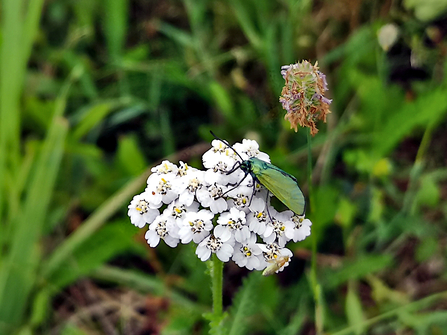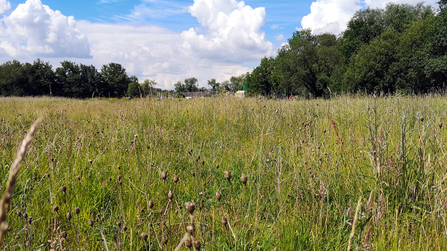Wildlife conservationists are dismayed that Three Rivers District Council have recommended the approval of a controversial planning application for two warehouses in Maple Cross. The proposed warehouses are to be built on land where a rare Forester moth, presumed extinct in Hertfordshire, was recently discovered. The planning application received objections from hundreds of local residents as well as Herts and Middlesex Wildlife Trust, The Colne Valley Regional Park Authority and The Maple Lodge Conservation Society.
The bright-green Forester moth (Adscita statices) was last seen in Hertfordshire in 1976 but was sighted on the development site in Maple Cross in July this year prompting further objections to the proposed development.



